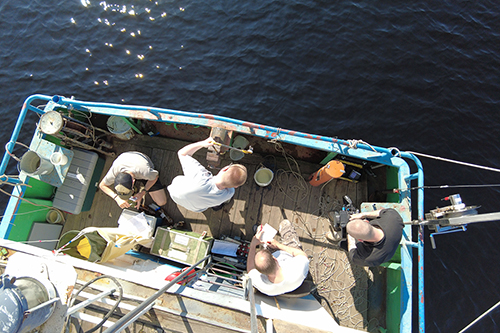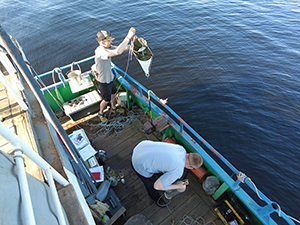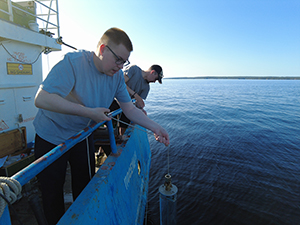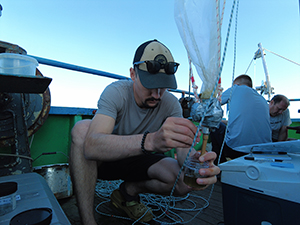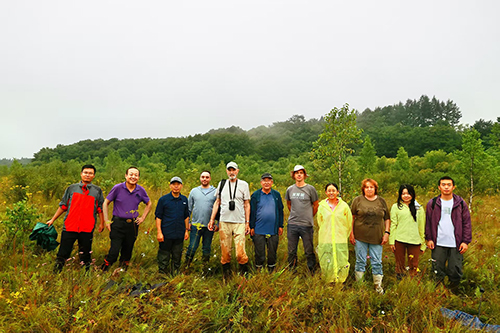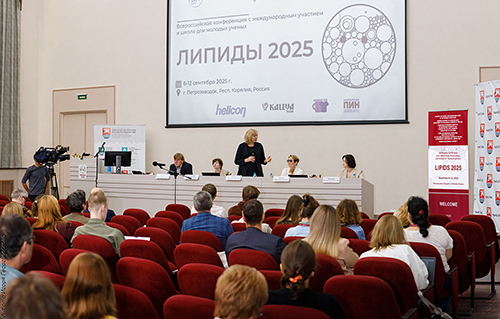– Expeditions are an integral part of the scientific work carried out at NWPI KarRC RAS. In situ data are the footing not only for assessing the current state of Lake Onego but also for the analysis of patterns in the ecosystem functioning, their formalization in models, and building future scenarios for the waterbody under climate change and human impact, – related Natalia Kalinkina, Leading Researcher of the Hydrobiology Laboratory NWPI KarRC RAS.
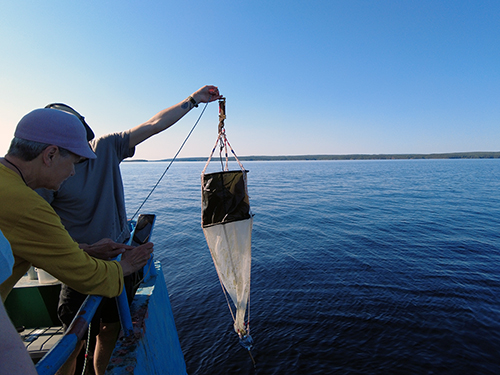
Sampling zooplankton
As human impact on Lake Onego grows, scientists continue monitoring Kondopoga Bay, which receives wastewater from the Kondopoga pulp-and-paper mill. In the past 20 years, the bay has been under greater pressure because of the development of trout farming. At the same time, regional warming intensifies eutrophication. Seeking to determine the combined effect of climate change and human impact, scientists perform annual observations and assess the possible changes in the trophic status and water quality of Lake Onego. Biomonitoring surveys in July 2025 included water sampling for chlorophyll-a – the main phytoplankton-related pigment and a major indicator of eutrophication. Water samples were also collected to determine total bacterial abundance and saprophytic bacteria numbers. These parameters are proxies of water quality. Saprophytic bacteria decompose organic matter in the water, so their large quantities may evidence a deterioration of the water quality.
Another sampled group was phytoplankton, whose species composition and quantities are biological indicators of the trophic status of the lake and help identify dangerous cyanobacterial blooming processes. Zooplankton samples were also collected during the expedition. Zooplankton abundance and biomass are indices used to assess lake productivity. Certain zooplankton species are indicators of eutrophication.
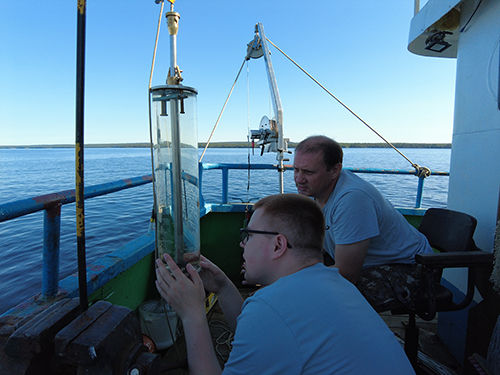
The samples will be sent to NWPI KarRC RAS labs to be treated
The hydrochemical component of the action included sampling for the water gas and ion composition, content of nutrients, organic matter and pollutants (heavy metals, oil products). The concentrations of dissolved gases – oxygen and ÑÎ2 – are the central indicators of lake ecosystem function, reflecting the neogenesis and destruction of organic matter. The ion composition reflects the content of dissolved mineral substances in the water and closely correlates with dissolved CO2 content and organic matter content of natural waters. Since nutrients – nitrogen and phosphorus – are essential for phytoplankton life, they are key indicators of the lake’s eutrophication. The sources of organic matter for lake are soil humic substances from the catchment and wastewater. Heavy metals arrive with river discharges, precipitation, and wastewater, while the source of heavy metals for the lake is land and water traffic.
The samples are now being analyzed in laboratories and the results are being treated. They will later be reported in academic papers.
Photos by Maxim Aliev /Sampo TV 360




